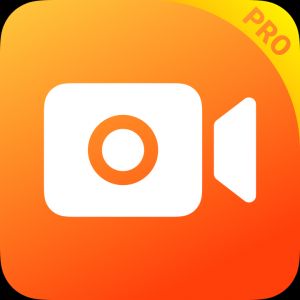6 Tips to Create Engaging Lecture VideosPosted by Jason Yaba on January 13th, 2021 Nowadays, students tend to spend their time more on-screen rather than on physical books. As everything goes digital, we need to find a way to deliver lectures and courses to be more exciting and less tedious for them. Here we have tips for you about how to create engaging videos using a professional screen recorder. 1. Prepare the lecture and slides Planning lecture content and preparing slides in advance can help maximize student engagement. Structure your presentation content to help your audience retain more material, and trim the content on your slides by eliminating redundancy in your lectures – use your presentation to increase your key points, not repeating them. 2. Prepare the recorder software or app You'll need to download the recorder software to your Mac or PC if you haven't installed it yet. Download the mobile app to complement the recorder on your Mac or PC. Working on a tablet or smartphone to record digital course material. 3. Optimize the audio and video quality Your recording environment will determine any equipment or enhancements you may need to maximize your course recordings' audio and video. Choose a quiet, bright space or office, and position your webcam so that it records your head and shoulders and sits around eye level. You will get pretty good audio and video from the original microphone and camera on your device in a quiet and bright environment. A few things to note when recording a video of a lecture outside the classroom: Backlight: Avoid getting a shadowy-look in front of the window because of the lots of light. Low lighting: The smaller sensor on the webcam makes the videos look choppy and graying in low light. Loud fans and other background noise: Air conditioning, humming machines, computers with noisy fans, and even noise from the outdoors can harm the audio in your lecture videos. The chaos behind you: Avoid sitting in front of anything that can get busy or distract your audience. Clear background will ensure the students can focus on the content in your presentation. Additional Equipment For Better Video Quality If lighting and background noise is a concern, an affordable, simple solution can improve your course recordings' quality. - External Microphone: High-quality audio is critical when recording lectures — if students can't hear or understand you, they won't watch videos. You can add a plugged microphone to your USB port to improve audio, such as a USB microphone or a condenser microphone. - Lighting: Try to make eye contact in each of your videos. Eye contact can maximize engagement with students. Make sure your face is visible and lit with soft light from the front. You can position one or two desk lamps behind your laptop to soften the light on your face. Record Lectures using your mobile phone You can also record lectures outside the classroom with a tablet or smartphone. However, these devices are usually better suited for field recordings or showing multiple points of view in demonstrations. Follow all of the setup tips above but also keep the following in mind: Mobile device cameras nowadays have stabilizing capability. It would be best if you still considered using a small tripod or standing up to record yourself for a better experience for your students and free up your hands as your reward. You can add a plugged-in clip-on microphone to a standard audio jack if the sound you get from your phone or tablet's built-in microphone sounds garbled. In the space where you record, you can also maximize the lighting and avoid backlighting. Video quality tends to decline rapidly in low light, or a backlight since cameras on mobile devices have small sensors. Be creative by creating an engaging lecture video using the screen recording capability on your mobile phone. Use Vidma screen recorder, and you can record your slideshow while recording yourself and your voice as the external audio source at the same time. Vidma screen recorder also has a built-in video editor. You can edit the video result directly after the lecture recording. 4. Trial a test video to check the audio and video quality Once you have your lecture material and recording settings ready to go, record a test video. In this video, you can practice your presentation and check to make sure you're happy with the sound, lighting, and overall quality of the video. 5. Record and edit the lectures Load your slides into your recorder, press record, and start your presentation. Record without pressing stop at your recorder until the end – if you make a mistake, you can stop giving a lecture for a few seconds to leave a silent pause in the video recording. The few seconds silent will make it easier for you to edit parts you don't want later. After you record the original recording, you can start editing details you don't want in the video. When you're happy with your recording, click upload. It will process, optimize, and upload your recordings to your video library. 6. Upload the lecture's video to LMS Add video to your learning management system (LMS). And if your recorder software includes video analytics, you can even evaluate the effectiveness of your recordings. For example, if you notice that students are down at some point, you can re-edit your original video in your editor software to improve the learning experience. Like it? Share it! |


